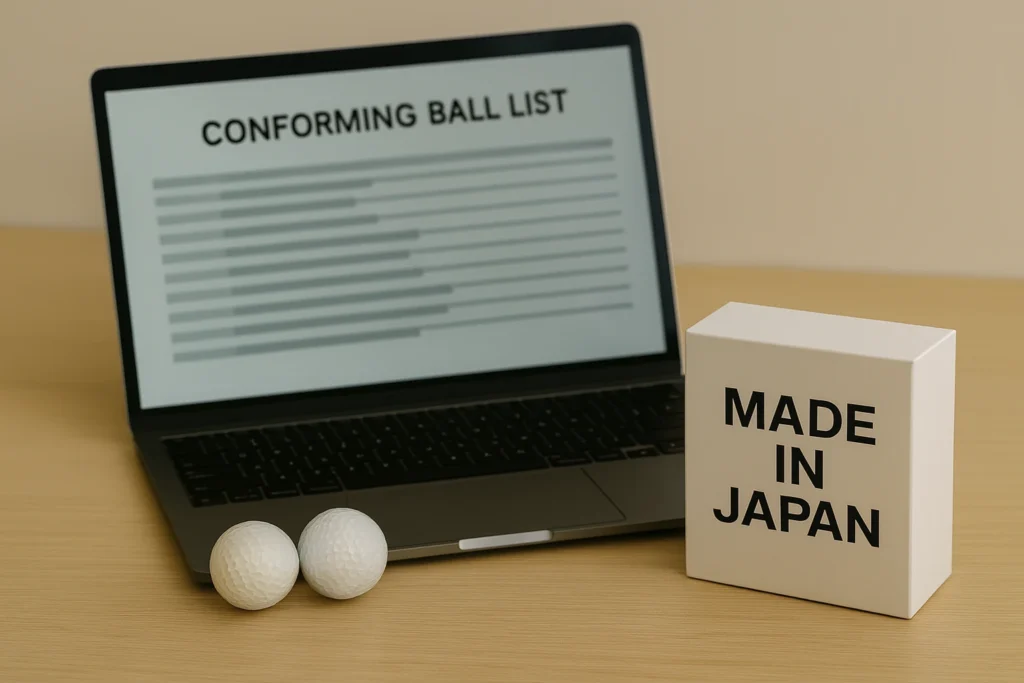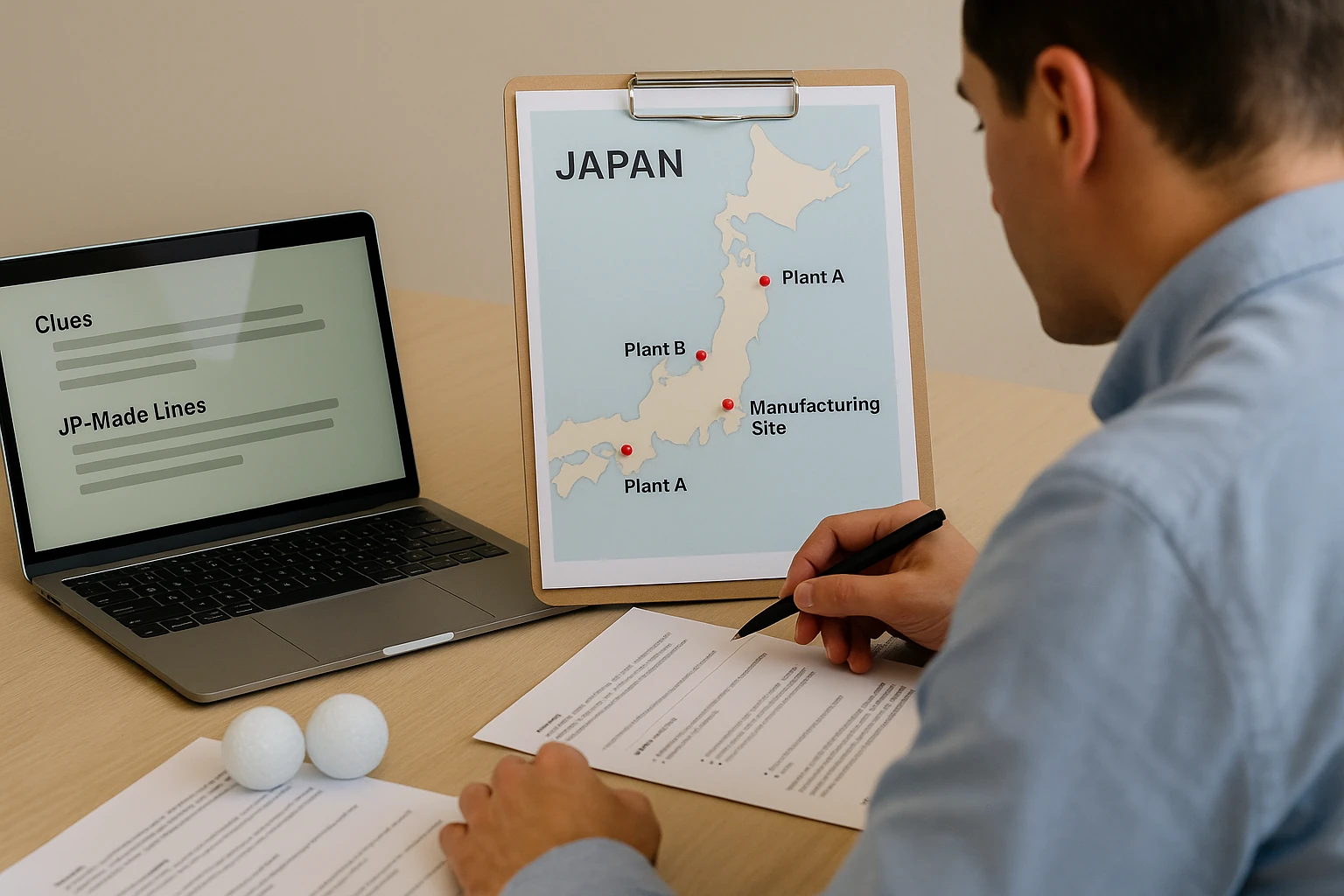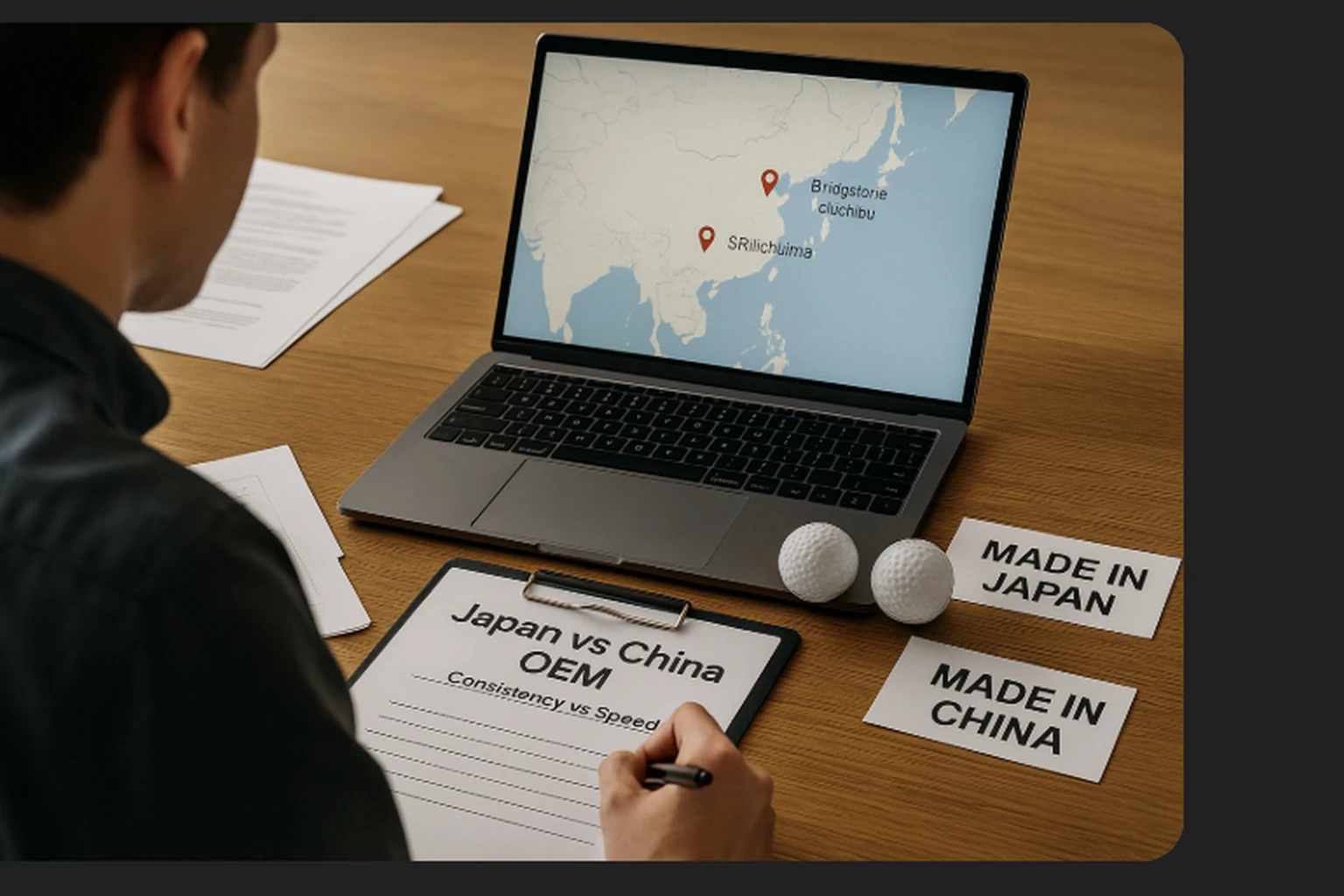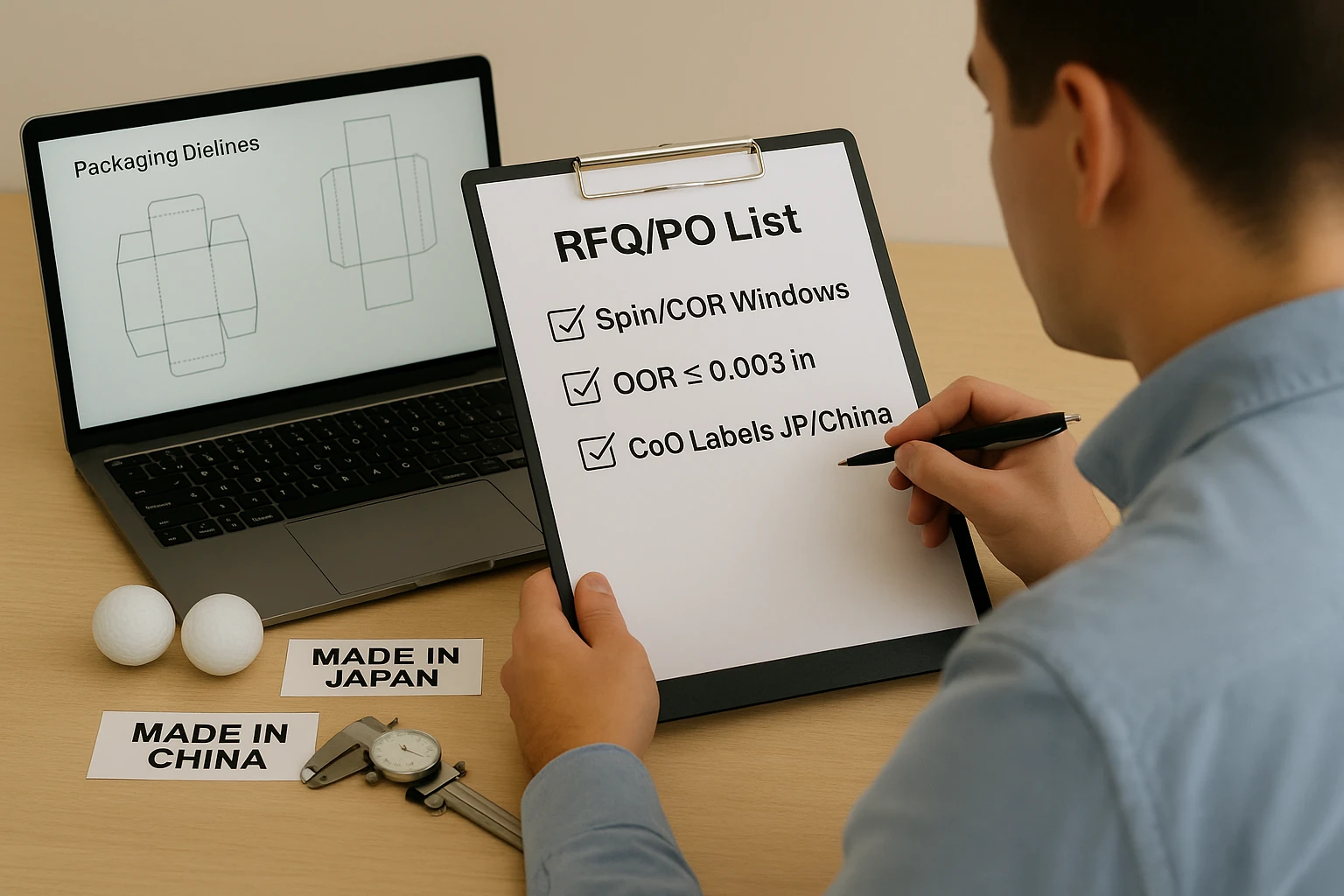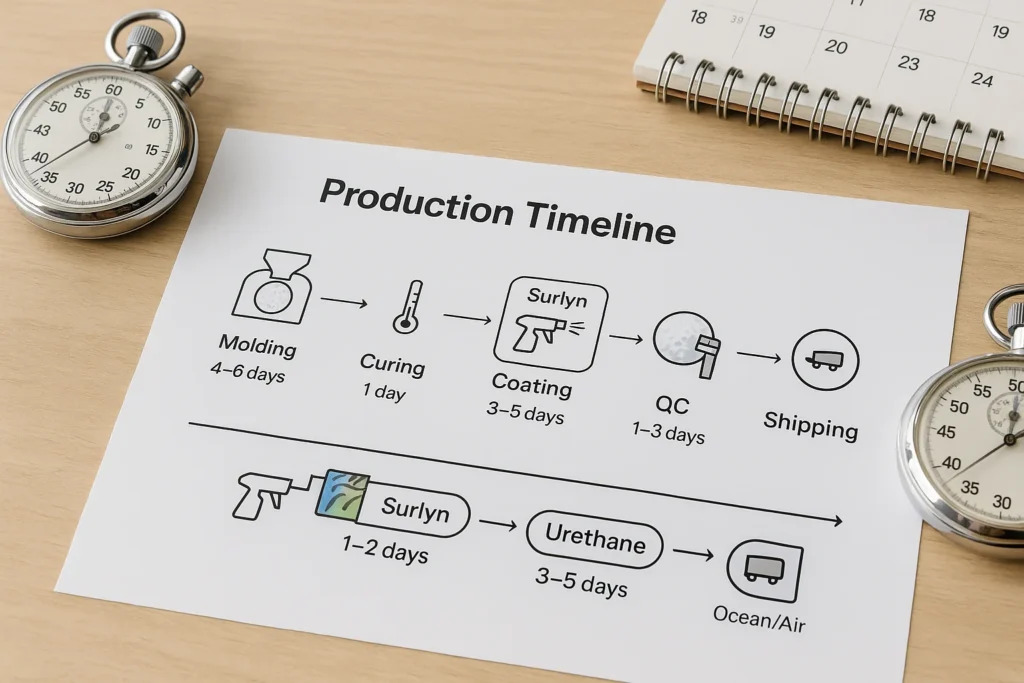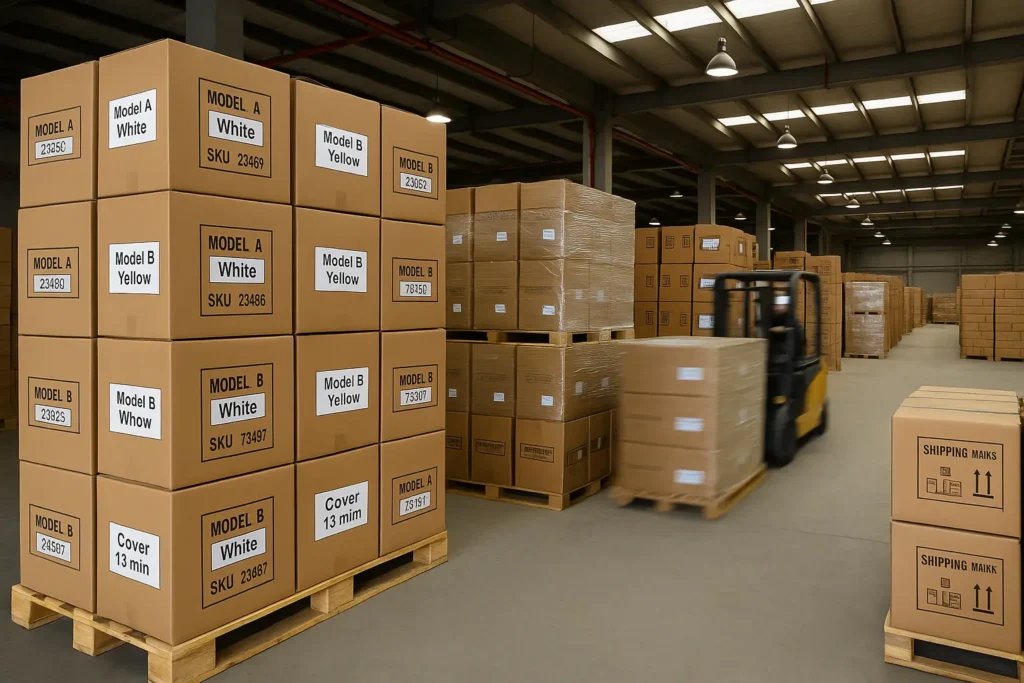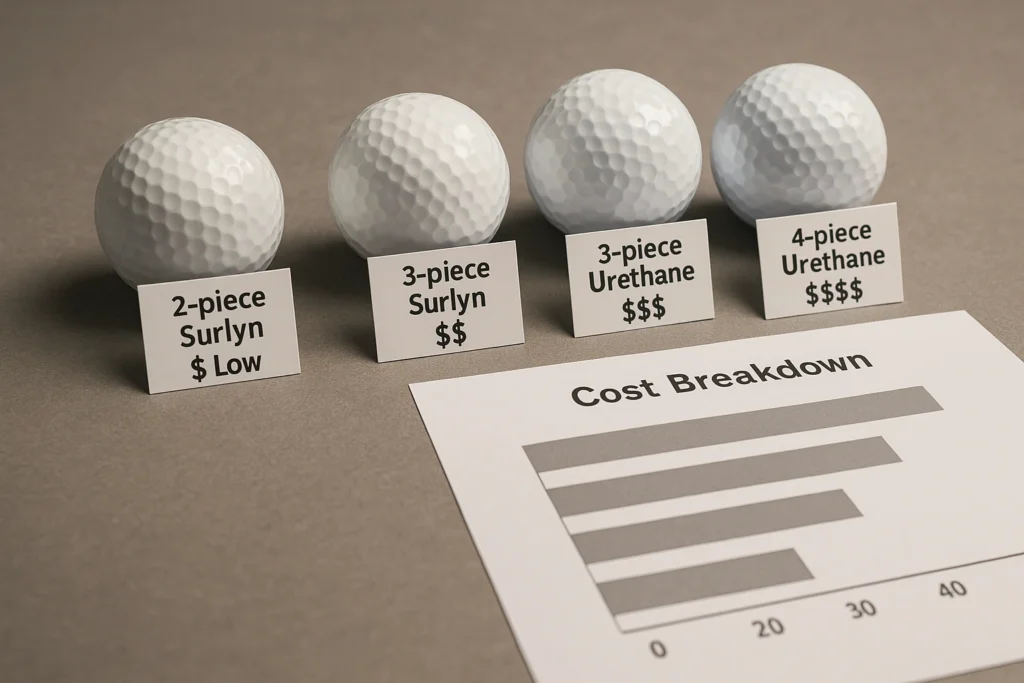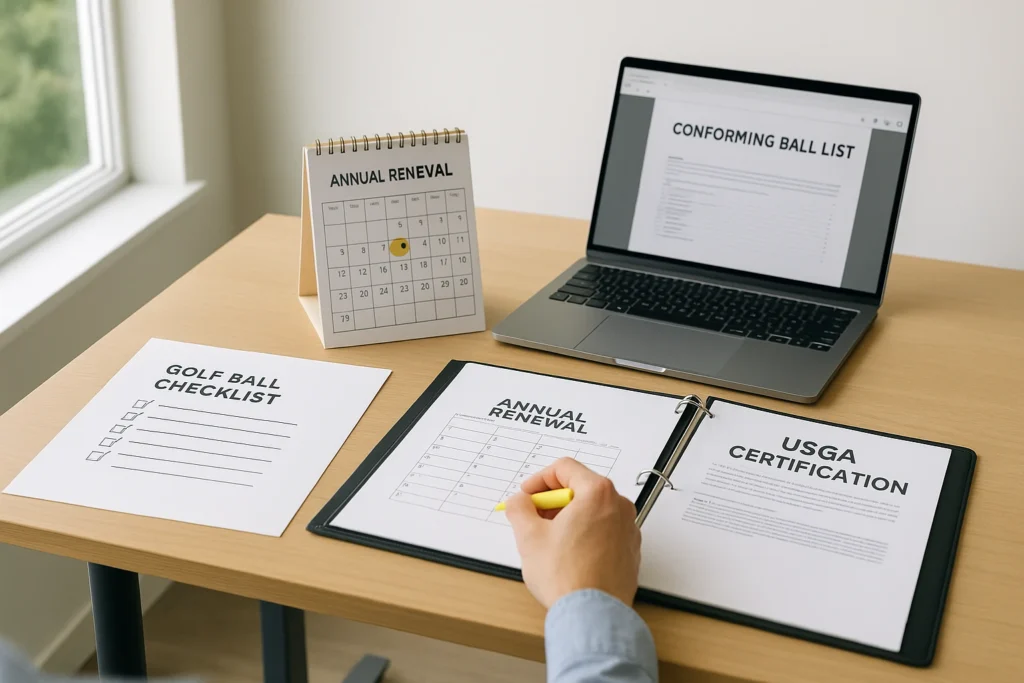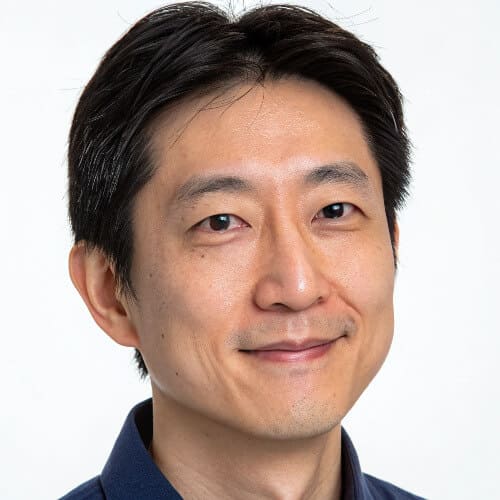Answer: For OEM buyers who need a verified shortlist and realistic timelines, Japan’s premium multilayer capability lives in a few hands. This Top-10 maps USGA-listed Japan registrants to real plant clues and JP-made lines, then shows when to pick Japan, China, or a hybrid route—so your RFQ, samples and PO stay inside clear windows.
- Sumitomo Rubber (Srixon/XXIO/Dunlop) — Hyogo (Ichijima) — JP-made flagship multilayer
- Bridgestone Sports Co., Ltd. — Saitama (Chichibu M&D Center; historic Yokohama) — TOUR B JP versions
- Kasco Corp. — Kagawa (Shido Plant) — KIRA color/visibility lines
- Mizuno Corp. — Osaka (registrant=JPN) — RB TOUR / RB TOUR X / RB566
- PRGR Co., Ltd. (Yokohama Rubber) — Kanagawa — PRGR Premium / RS SPIN
- GLOBERIDE, Inc. (ONOFF) — Tokyo (Higashikurume) — ONOFF SD247S
- LEZAX, Inc. — Fukuoka — Spalding (Japan market) etc.
- Alpen Co., Ltd. (Golf5) — Nagoya — TOBUNDA / licensed collabs
- Victoria G&F (512 STYLE) — Tochigi (Utsunomiya) — 512 STYLE (2-piece)
- Dunlop (within SRI group) — Hyogo (Ichijima) — TRI-STAR / Soft Feel Lady (JP versions)
| Manufacturer | JP base / plant | Flagship / JP-made lines |
|---|---|---|
| Sumitomo Rubber (Srixon / XXIO / Dunlop) | Hyogo, Tamba — Ichijima Factory | Z-STAR / Z-STAR XV / Z-STAR Diamond; Q-STAR; AD333; select XXIO JP-made |
| Bridgestone Sports Co., Ltd. | Saitama, Chichibu — M&D Center | TOUR B X / XS / RX / RXS (JP versions); PHYZ; JGR |
| Kasco Corp. | Kagawa, Sanuki — Shido Plant | KIRA; KIRA Diamond; KIRA Star (JP focus) |
| Mizuno Corp. | Osaka — HQ (registrant JPN) | RB TOUR; RB TOUR X; RB566; Nexdrive |
| PRGR (Yokohama Rubber) | Kanagawa — group base | PRGR Premium; RS SPIN; Soft Distance |
| GLOBERIDE (ONOFF) | Tokyo, Higashikurume — HQ | ONOFF SD247S (4P-2c) |
| LEZAX, Inc. | Fukuoka — HQ | Spalding (Japan market) etc. |
| Alpen Co., Ltd. (Golf5) | Nagoya — HQ | TOBUNDA; licensed collabs |
| Victoria G&F (512 STYLE) | Tochigi, Utsunomiya — base | 512 STYLE (2-piece) |
| Dunlop (within SRI group) | Hyogo, Tamba — Ichijima | TRI-STAR; Soft Feel Lady (JP versions); AD333 |
✔ Clarification — Registrant vs Manufacturer
- USGA “Country=JPN” is the registrant location, not the origin label.
- COO for customs/claims follows the package origin on that SKU/lot.
- Same model family may span JP and offshore runs—verify per lot.
✘ False — “USGA shows Japan, so it is Japan-made”
Treat USGA as conformance evidence, not a factory stamp. Ask for batch photos/labels and keep current USGA/R&A screenshots.
Who actually manufactures golf balls in Japan today?
True domestic mass production with brand-registered models is concentrated in Sumitomo Rubber Industries (Srixon/XXIO/Dunlop) and Bridgestone Sports; others are brand owners/registrants with mixed footprints. USGA “manufacturer country” ≠ product COO. Verify origin per SKU before pricing, claims, or incoterms.
How do I interpret USGA database vs. package COO?
USGA’s “Japan” is a registrant flag, not a factory stamp; customs and marketing follow the package’s COO, so your RFQ and PO must reference the printed origin on that exact SKU/lot.
For the same model family, JP domestic batches can coexist with Indonesia/US/Vietnam runs. Capture lot IDs, keep USGA/R&A screenshots with model naming, and align sales copy with the specific batch you will deliver.
Where are JP-capable multilayer urethane lines?
Premium cast-urethane and finish are centered at SRI Ichijima and Bridgestone’s Chichibu/Yokohama lineages; Kasco’s Shido plant anchors color/visibility lines; other registrants keep HQ in Japan but diversify production.
Result: “Made in Japan” is often reserved for flagship or JDM variants. Expect brand-first capacity allocation and narrower OEM windows than China’s open OEM clusters.
What’s the capacity-access reality for OEM?
Third-party OEM slots at big JP brands are limited and book early; validation gates are stricter and cadence slower. If your roadmap needs speed/MOQ agility, plan either a hybrid path or a China route for non-Tour work.
Run packs in parallel, freeze windows, and stage releases to avoid rework. JP plants trade speed for consistency; design your launch calendar accordingly.
Methodology & How to Use This Evidence Map
Snippet: This Top-10 is an evidence map, not a capacity ranking. We start from USGA “manufacturer = Japan”, then layer plant/base disclosures and JP-made model clues. Use it to shortlist vendors—then verify COO per SKU and confirm OEM access, timelines and tooling before committing.
Inclusion criteria
- USGA manufacturer = Japan (current records)
- Traceable JP base/plant or JP-made line evidence
- Active or recently listed flagship models
Exclusions
- Pure distributors without manufacturer registration
- Entries lacking plant/model evidence
- Historical-only items with no current relevance
Buyer checks (apply across brands)
- Per-SKU COO with batch labels/photos; keep current USGA/R&A screenshots
- Freeze spec windows in RFQ/PO (compression, COR, OOR, shell thickness)
- Validation ladder: lab → robot (1W/7I/50y) → field; CT/X-ray slices (n≥5), lot stats (n≥12)
- Align model naming across artworks; keep retention samples by lot
Operational tips
- Validate OEM availability, booking windows and tooling before PO
- Stage releases; split early POs; parallelize packaging/artwork to protect shelf dates
What makes “Made in Japan” golf balls different in specs and validation?
JP-made balls lean on thin cast-urethane shells, strict concentricity and disciplined validation ladders. That consistency suits flagship retail and JDM positioning, but it trades off speed and MOQ flexibility versus China’s OEM clusters—plan calendars and claims accordingly.
What spec windows should be frozen?
Shell 0.45–0.65 mm (single side), OOR ≤0.003 in, dual-speed COR at 38/43 m/s, robot curves (Driver/7-Iron/50-yd), CT/X-ray n≥5 and lot stats n≥12; premium finish needs paint and print durability gates.
Use SPC sampling and Cpk ≥1.33 for key dimensions. Hold packaging until core/casing feel is steady; define ECO timing SLAs so BOM shifts don’t slip under the door.
TPU vs cast-urethane—are they interchangeable?
No—TPU is thermoplastic for durability/value; cast-urethane is thermoset for softer feel and higher greenside spin when built well. Specs and timelines aren’t interchangeable; write separate windows by construction.
Pick TPU for range/practice or price tiers; pick urethane for Tour/near-Tour claims. Keep test curves separate to avoid cross-talk in analysis.
Does a thicker cover always add distance?
No—over-thickening raises weight variance and can blunt spin/feel; distance is a system result across core, mantle, dimples and cover chemistry.
Validate against a benchmark Tour ball on a robot. Protect greenside spin while meeting durability targets.
✔ True — What “lead time” actually includes
Lead time isn’t just production days. It includes material sourcing, QC buffer, packing prep, and sometimes customs readiness. Accurate planning means accounting for all parts of the timeline.
✘ False — “Once I pay, production starts right away”
Assuming production begins immediately after payment is a common mistake. Materials may need 5–10 days, molds must be set, and line slots arranged. Rushing risks lower quality or missed windows.
Japan vs China vs hybrid—when should you choose each route?
Choose Japan for flagship/JDM control and visible “Made in Japan”; choose China for Surlyn practice/promo and mid-market packs where speed, MOQ and packaging integration win; run hybrid if you need high performance with better cadence and cost.
When is Japan the better fit?
Flagship retail and JDM narratives need JP-made credibility, tight SPC and repeatable finish; expect cautious booking and stricter OEM access at brand plants.
Freeze spin, COR and OOR windows; capture JP lot photos and labels. Allow more time for approvals and coatings—finish is part of the value proposition and should be tested, not assumed.
When is China the better fit?
Practice/promo and mid-market retail thrive on China’s cadence: 2–3-piece Surlyn, fast logo packs, mixed cartons, e-commerce kitting and quick replenishment with multi-SKU agility.
MOQ flexibility and parallel packaging protect shelf dates. Use generous windows on non-Tour lines and quarantine early defects with staged releases.
What does a hybrid route look like?
Validate on premium lines (JP/other mature urethane), then package/scale in China to compress lead time and landed cost while holding performance.
Keep retention samples, split early POs and pause if Cpk or wedge-spin windows compress. Document model naming so claims remain compliant across geographies.
| Dimension | Japan | China |
|---|---|---|
| Main arena | Flagship/JDM multilayer urethane | Surlyn practice/promo & mid-market |
| Plant access | Brand-first, OEM windows narrow | High OEM/ODM availability |
| Consistency vs speed | High consistency, slower cadence | Fast cadence, flexible MOQ |
| Packaging | Brand retail focus | Integrated packs, mixed cartons, kitting |
| Best fits | Tour/near-Tour, JDM claims | Value tiers, gifting, e-com bundles |
Which RFQ/PO items should you freeze to prevent drift?
Freezing specs prevents rework and protects timelines—no matter where you build. Lock windows in the PO to stop mid-season drift and keep claims compliant across batches.
What’s the 10-item freeze list?
Write windows, tools and evidence in plain English; your supplier should pass gates before scaling to full molds and cartons.
1) Structure & shell window 0.45–0.65 mm (single side)
2) Compression target ATTI 95 ± 5
3) Dual-point COR 38 & 43 m/s
4) OOR ≤ 0.003 in; key dims Cpk ≥ 1.33
5) Robot curves 1W / 7I / 50y
6) CT/X-ray n ≥ 5
7) Lot stats n ≥ 12 (mean/σ/min/max)
8) Coating/print durability tests
9) Packaging dielines & Pantone; version/ECO cadence
10) Compliance snapshots (USGA/R&A current lists)
How should compliance and claims be aligned?
USGA listing confirms conformance, not origin; COO on package governs customs and marketing. Keep current screenshots and align model naming across artworks and listings.
If you run hybrid batches, maintain separate labels and retention samples by lot. Train sales teams on language—“JP version” vs “offshore version”—to avoid mis-selling.
✔ True — What MOQ really reflects in manufacturing
MOQ (Minimum Order Quantity) is not random. It’s based on raw material batches, machine setup cost, and packaging runs. Negotiating it requires trade-offs in price, timing, or customization.
✘ False — “MOQ is just supplier being lazy or rigid”
Thinking MOQ is just a made-up number can lead to friction. It’s tied to real production logic — understanding this helps you get flexibility the right way.
FAQ — What else do OEM buyers ask?
Use these short answers to align expectations, speed internal approvals, and keep claims safe across markets.
Can I OEM directly with Srixon or Bridgestone?
Usually constrained. Brand self-use comes first. Third-party OEM access is limited and must pass strict validation.
Why are Japan-made balls more expensive?
SPC discipline, finish standards, labor, and brand-tier positioning. You’re paying for repeatability and retail feel.
If the model name is the same, are JP and offshore batches identical?
Not necessarily. Validate per lot. Spin, feel and variance can differ; lock windows and keep batch evidence.
I need near-Tour performance on a budget—what’s realistic?
Run a hybrid: validate on premium lines, then package/scale in China while holding your windows.
What MOQs and timelines should I expect?
Surlyn lines often 3k–10k per color/art; urethane higher. Budget 8–12 weeks unless using agile builds and parallel packs.
Key Takeaway: Japan concentrates flagship multilayer capability in a few plants—great for JDM claims but slower and less flexible. For Surlyn practice/promo and mid-market OEM, China or a hybrid route protects speed, MOQ and packaging. Verify COO per SKU and freeze windows in the PO.
Get OEM Golf Ball Samples & a Fast Quote from Golfara
While we don’t match Japan’s tour-grade engineering yet, Golfara is strong on Surlyn practice/promo and mid-market balls—high value and fast lead times. If that’s your brief, contact us and we’ll provide the services below.
- Low MOQ: from 1,000 pcs
- Samples: stock (no-print) ready; custom-printed in 3 business days
- Production: ≤10 working days (small batch); large orders ≤30 days
- Design team: logo imprint & custom packaging
- Response: ≤12 hours for a detailed quote and plan
- Need near-Tour? Ask about our hybrid route (validate premium, package/scale in China)
You might also like — Top 10 Golf Ball Manufacturers in China for OEM

